“The only way to handle pressure is to apply it.”—Darrelle Revis
I would add that handling pressure means properly applying it. The area where a lot of kettlebell practitioners feel pressure is where the kettlebell rests on the forearm during a get-up. Not properly applying the pressure in this situation can really be a pain, quite literally, in the forearm.
The Individual Body and the Individual Bell
Someone recently posted a question on social media asking how to handle the pressure of the kettlebell against the forearm, but the key part of the question was that the individual was not having an issue until the kettlebell reached a certain size. In this case, it was 40kg, but depending on your structure this issue could arise at a different size. Why was the size of the kettlebell important?
Because at a certain point how you address the kettlebell for the initial roll to press to get into your get-up will need to be adjusted to the size of the kettlebell versus the size and length of your forearm and arm. This is something I have done without realizing it until this person’s question made me think through my positioning.
I have to add a caveat here: there will be people who feel too much pressure against the forearm even if the positioning is perfect. We don’t “carry” things against our forearm on a routine basis outside of kettlebells. So some people will need to use a sweatband to take the pressure off the forearm. Usually the thickness of the sweatband can be reduced over time as the individual adjusts to the pressure, but even I will use a sweatband when needed for a student instead of avoiding get-ups.
Adjust to Fit Your Unique Leverages
When we roll to our side and place our hand into the handle of the kettlebell to begin a get-up, we are looking to establish the proper grip with the handle parallel to the callouses, wrist neutral, and the body of the kettlebell resting comfortably against the forearm. This may also mean bringing the grip closer to the “thumb side” angle of the handle. As you can see in the video below, I slip right into position with the 24kg kettlebell, but the 36kg kettlebell is a different story.
With the 36kg kettlebell, I need to tilt the kettlebell toward me and find the right angle so I can get the grip and wrist position correct and rest the kettlebell in a position of my choosing. This means adjusting the kettlebell to fit my unique leverages and structure instead of punishing my leverages and structures with the kettlebell. If I leave the kettlebell un-tilted, I have to leverage the kettlebell against my arm, which creates a lot of pressure (cue the song—you know the one). Under this pressure and potential discomfort, I may not be able to focus during my get-up or, worst-case scenario, I adjust my get-up to the discomfort and compensate in an unsafe manner.
The Set-up Is the Beginning of Success
In everything from a great powerlifting squat or deadlift, to a great kettlebell swing, to a golf swing, the set-up is critical. Pay attention to how you are setting up for your get-up and use this tilt technique to find the proper position to apply the pressure—and you may find yourself performing more comfortable and stronger get-ups.
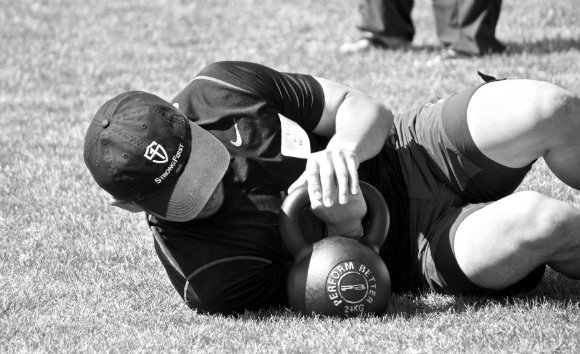
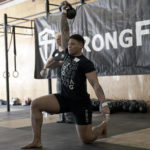
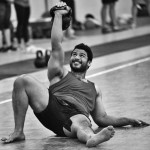
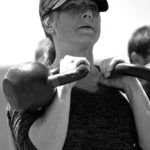
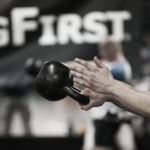




Thank you and hope it has been helpful
This is super useful! I never even thought of trying this with my 24 (which is kind of a cheapy, and enormous). I might give this a shot in tomorrow’s session. Thanks!
You are consistently helpful. Thanks!